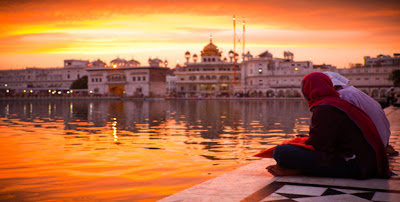
As a people, we recycle everything, particularly gifts. We gift transactionally– marking the ‘importance’ and the social status of the recipients, keep track of what others give (indeed there are notebooks devoted to that) so that we can reciprocate appropriately and are only just learning to carry gifts with us at dinner parties. Traditionally, we have carried good wishes and not measured relationships with the value of gifts.
In our literature, popular culture or mythology, there are no stories of joyous gifting. There is ‘dakshina’ given to the guru or the mendicant, there is the boon that is granted to the devotee, the dowry that is brought by the bride or the ‘stree-dhan’ gifted by her parents, the gift from the brother for Rakhi, the new clothes bought and the ‘business gifting’ during Diwali – all are structured and proportioned by the occasion and the recipient.
Birthday gifts are an accepted norm now for perhaps one or two living generations and are a ‘learned’ phenomenon like the birthday party and the birthday cake. There is nothing in our culture that suggests spontaneous, joyous gifting that marks an outpouring of love.
Indeed, there is no Indian festival that celebrates ‘Love’. Not in the way Valentine’s Day does. As a society, we have been at odds with an overt expression of love and have sought to bury it in the transactional.
The only Indian festival that comes close to this romantic notion of love is KarvaChauth, where a woman prays for her husband’s longevity. Love, here, is couched in the transactional. It is a prayer by the woman so that she may be cared for all her life. Her identity and well-being comes from the man in her life and on his death she could be destitute. Thus, the whispered blessings of “Akhand Soubhagyavat”i or “may you die before your husband” are what every bride receives.This is the Indian construct of love, submerged in carefully constructed societal boundaries. Love traditionally, is measured, circumspect and if unleashed, met with Anarkali like consequences.

Deconstructing love, we see why it is such an addictive yet elusive emotion. Firstly, it truly blooms when it is given as it is received. (Unrequited love is a lonely and bitter place). Being loved makes a nobody into a somebody. Recognition, being singled out, being made to feel special and being accepted unconditionally (in the first throes of love at least) are gratifications that deeply resonate with the human psyche. Love is the ultimate celebration of the human condition and reportedly, the joy of the first flush is unparalleled in life. In every language in the world, people ‘fall’ or ‘slip’ in love, they become ‘mad’ and are ‘inflamed’. While this may be a transient state – it is what pushes people ‘headlong’ while throwing all ‘caution to the winds’. Love gives extraordinary courage to defy emperors or ‘Khaps’, overcome social norms and communal boundaries and transcend the ordinary, the banal. Love is the giving of oneself, of a total surrender of one’s wishes and desires to the other. It is entirely giving.
A gift is the perfect symbol of love. A true gift is giving joyously without the expectation of receiving. When life settles into the humdrum – besieged by met and unmet expectations of lovers and the protagonists become ordinary people, a gift is symbolic of the depth of feeling that is not so overt anymore. The selflessness of love is perfectly epitomized by the joy of gifting. The success of Valentine’s Day is just that – a ritualistic marker to the affirmation of love.
In India, while the notion of love has changed and courtships and love marriages are increasingly common;
we are only just learning to gift in love. In the US, 70% of jewellery sales are due to gifting by the man. In India, it is less than 15%. Overall, gifting accounts for 20-40% of retail sales in the US, depending on the category; and Valentine’s Day is a significant economic engine.
Valentine’s Day has enormous potential in India – as our definition of love changes, new rituals can be designed. The savvy marketers should leverage this opportunity to build brands based on gifting.
Not just Valentine’s Day, we also need to understand the potential of KarvaChauth. The romanticization of the festival by the Johars and Chopras has made it pan-Indian, pan-gender (it is practiced by my Muslim friend and his half-Bengali, half-British wife) which allows for it to be leveraged as the
Indian Valentine’s Day. The motifs of KarvaChauth are the crescent moon, a mesh, a reflection in water. What can be more romantic? This could be the day symbolically marked by exchanged gifts.
Given our Hinglish lives, with wedding sangeet and reception with cocktails or hors d’oeuvres that include chicken tikka, both festivals can become a part of our lives.
As marketers, we can ‘brand’ these with symbols and rituals, myths and stories. Valentine’s Day has a clear visual language. The color red and the symbol of hearts are easily recognizable. What is the color of KarvaChauth? The symbols are not universal designs that are iconized in our consciousness. This needs to be done in a concerted manner by branding agencies, retailers and industry bodies such as CII.
Festivals are economic engines and both the western and the Indian Valentine’s Days are rife with growth potential.
AlpanaParida
is President of DY Works , a leading brand strategy
and design firm.








